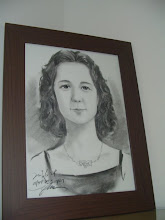by Ramus et al.
Summary
A multiple case study was conducted in order to assess
three leading theories of developmental dyslexia: (i) the
phonological theory, (ii) the magnocellular (auditory
and visual) theory and (iii) the cerebellar theory.
Sixteen dyslexic and 16 control university students were
administered a full battery of psychometric, phonological,
auditory, visual and cerebellar tests. Individual
data reveal that all 16 dyslexics suffer from a phonological
de®cit, 10 from an auditory de®cit, four from a
motor de®cit and two from a visual magnocellular
de®cit. Results suggest that a phonological de®cit can
appear in the absence of any other sensory or motor
disorder, and is suf®cient to cause a literacy impairment,
as demonstrated by ®ve of the dyslexics. Auditory
disorders, when present, aggravate the phonological
de®cit, hence the literacy impairment. However, auditory
de®cits cannot be characterized simply as rapid
auditory processing problems, as would be predicted by
the magnocellular theory. Nor are they restricted to
speech. Contrary to the cerebellar theory, we ®nd little
support for the notion that motor impairments, when
found, have a cerebellar origin or re¯ect an automaticity
de®cit. Overall, the present data support the
phonological theory of dyslexia, while acknowledging
the presence of additional sensory and motor disorders
in certain individuals."
University students with dyslexia were compared to a control group without dyslexia. Both groups were given a variety of tasks: phonological, auditory, balance/cerebellar, language-related.
"16 dyslexics out of 16 had
poor performance in phonology, 10 in audition, four in
cerebellar function and two in magnocellular vision."
Subscribe to:
Post Comments (Atom)

No comments:
Post a Comment